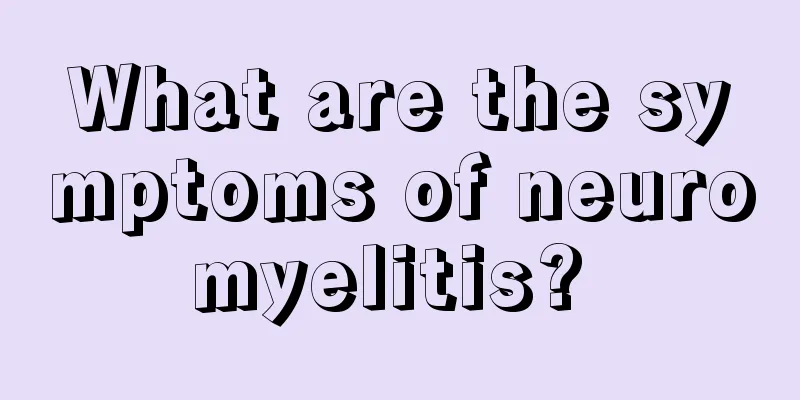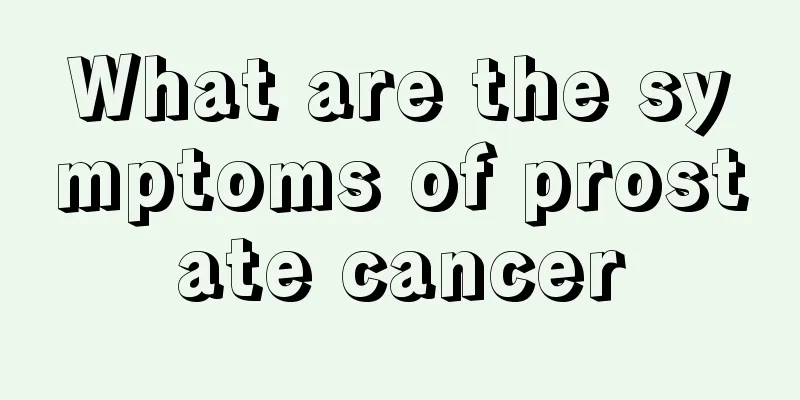What are the symptoms of neuromyelitis?

|
Disease is a great destructive factor to people's lives. For example, neuromyelitis is a disease with a very big impact. It can cause extreme pain in the patient's body. In addition, inflammation of the spinal nerves is very difficult to treat, and the treatment process is also very long. Let's take a look at the symptoms of neuromyelitis. I hope everyone can understand. Neuromyelitis optica is an inflammatory demyelinating disease of the central nervous system that primarily affects the optic nerves and spinal cord. The main clinical feature is the simultaneous or sequential involvement of the optic nerve and spinal cord. The disease can occur at any age, with an average age of 30 to 40 years old, and is more common in women. Currently, single-phase neuromyelitis optica is usually called Devic's disease, and multi-phase neuromyelitis optica is called relapsing neuromyelitis optica. Clinical manifestations The onset is generally acute or subacute, reaching its peak within a few days and 1 to 2 months respectively. In a minority of patients with chronic onset, the condition steadily progresses over several months and worsens progressively. 1. Optic nerve damage Both eyes are often affected simultaneously or successively. Initially, vision is reduced and the eyeball is swollen and painful, which is more obvious when the eye moves. In acute cases, the affected eye suffers partial or complete loss of vision within hours or days. The main visual field changes are central scotoma and centripetal narrowing of the visual field, and hemianopsia or quadrantanopsia may also occur. 2. Spinal cord damage It manifests as complete transverse lesions of the spinal cord. Within hours to days, the motor, sensory and autonomic nerve functions of both sides of the spinal cord are severely impaired, and movement disorders can rapidly progress to paraplegia or quadriplegia. If the lesion is in the cervical segment, a positive Lhermitte sign may appear. In severe cases, severe demyelination causes the nerve impulse to spread, leading to painful spasms and paroxysmal convulsions. 3. Other symptoms A small number of patients may experience optic nerve and extraspinal symptoms, such as dizziness, facial numbness, nystagmus, headache, and postural tremor. A very small number of patients may experience extraocular muscle paralysis, epilepsy, ataxia, dysarthria and peripheral nerve damage. |
<<: What are the symptoms of neurological enteritis?
>>: Treatment of blue algae in white shrimp
Recommend
What are the main hazards of hamartoma
The deterioration of the environment, unsafe diet...
8 Misleading Health Rumors: Drink White Wine When You Feel Cold?
Eating black fungus regularly can clear the lungs...
Prevention methods for osteosarcoma in daily life
Osteosarcoma is a bone disease that occurs mostly...
How long can you live after ovarian cancer surgery
When it comes to ovarian cancer, many women will ...
Taboos of washing your face with lemon water
Brushing teeth and washing face are things that e...
Can cerebral ischemic lesions lead to brain cancer?
Brain tumors are classified according to the loca...
What harm does nuclear radiation do to the human body
With the continuous development of science and te...
Paranoia
Patients with paranoid phobia are afraid of certa...
What to do if you have severe athlete's foot
Athlete's foot can be mild or severe, but we ...
What factors can cause women to suffer from cervical cancer?
Cervical cancer is a type of female tumor disease...
What is prostate cancer? Where does prostate cancer metastasize to?
Among cancer diseases, the occurrence of prostate...
Are negative ion pads good for gynecological inflammation?
Women often have to use sanitary pads when they h...
What are the health benefits of chicken bone grass dragon bone soup
Chicken bone grass and dragon bone soup is actual...
What are the symptoms of a wasp sting?
Hornets are different from bees. Hornets can catc...
What are the sequelae after radiotherapy for cervical cancer
Sequelae of radiotherapy for cervical cancer. The...









